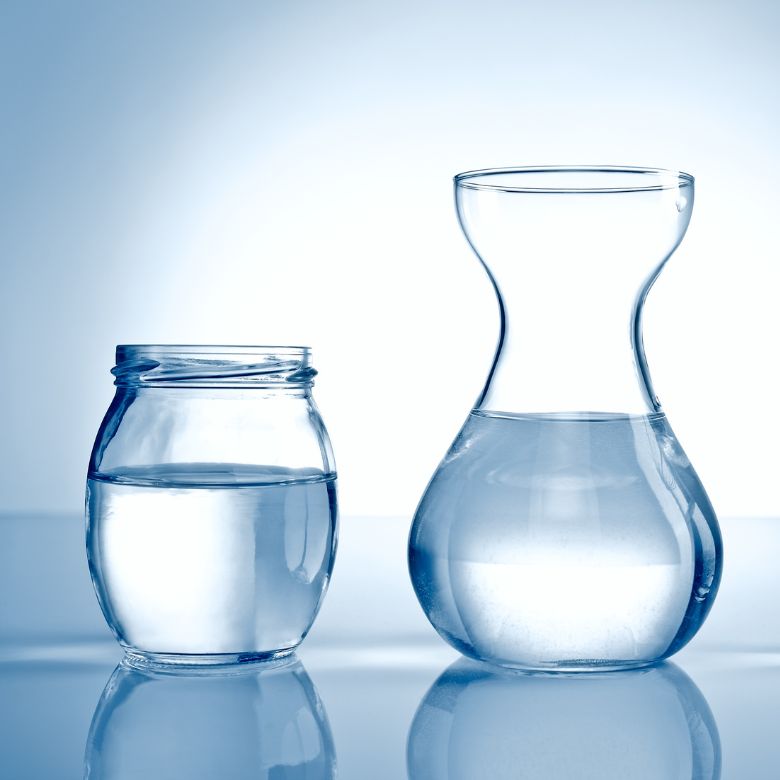It is a mixture of acids that has been known for over 1000 years It even dissolves noble metals! What we are discussing here is aqua regia, which is widely used in everyday life. What exactly is this liquid, what is it used for and what are its crucial properties? Check out the answers.

Aqua regia – composition and preparation
What is aqua regia (from Latin, literally ‘royal water’, colloquially: royal acid) and what does it contain? The marvel of this substance comes from its simplicity – 2 ingredients are sufficient to produce it. Aqua regia is a highly oxidising mixture that is made by combining concentrated nitric acid (HNO3) and hydrochloric acid (HCl).
It is not difficult to prepare aqua regia but any domestic use is advised against. Note that one only should prepare as much mixture as required at the moment. Its fumes are poisonous and the liquid may damage the vessels in which it is stored and cause extensive material damage. How do you prepare aqua regia? Simply add one measure of nitric acid to 3 measures of concentrated hydrochloric acid – and it’s done. A chemist would describe this process as follows: HNO₃+ 3 HCl.
The properties of aqua regia
What should you know about the physical and chemical properties of aqua regia? It is a caustic liquid that turns from transparent to rich orange when prepared. An unpleasant suffocating odour hangs emanates from a test tube that contains freshly prepared aqua regia – this is nitric acid, which irritates the eye mucous membrane and the respiratory tract. Aqua regia dissolves in regular water (H2O).
What metals can aqua regia dissolve? Gold, platinum, palladium or nickel are examples of metals that aqua regia handles effortlessly and solubilises them, i.e., it transforms them from solids to a solution. Few elements may resist the effects of aqua regia, but it does not affect tungsten or osmium.

What is aqua regia used for?
Aqua regia is widely used in everyday life, in industry and in scientific labs. Where is it used? Chemists have and still use aqua regia mainly to remove metal residues from laboratory ware: flasks, beakers, cylinders or pipettes. Moreover, aqua regia is used:
- in soil science (for digestion of soil samples),
- as a laboratory chemical reagent,
- to produce do tetrachloroauric(III) acid, used for example for gold plating and in industrial machinery for refining gold.
Aqua regia – fun facts
Aqua regia is a mixture that has fascinated chemists, scientists and laypeople alike for centuries. The mixture may have never been made, were it not for the thousands of years of searching for the philosopher’s stone. Alchemists in the Mediterranean Basin desired to possess a substance that would turn base metals into gold, silver or other valuable noble metals.
What else should you know about aqua regia? There are many tidbits. For example, when aqua regia is combined with cyanide salts, highly poisonous substances are produced, such as HCN, hydrogen cyanide (the gas smells deceptively of almonds and may cause the poisoning of the human respiratory tract; it is used as an agent against insects and rodents).
Another fun fact concerning aqua regia is how the liquid solubilises a noble metal. Chemistry describes the reaction of gold with aqua regia as follows: Au + HNO3 + 4HCl → AuCl-4 + H+ + NO + 2H2O. When exposed to aqua regia, gold turns into caustic chloroauric acid with a characteristic yellow colour.
- https://encyklopedia.pwn.pl/haslo/woda-krolewska;3997249.html
- https://www.naukowiec.org/wiedza/chemia/woda-krolewska_2984.html
- https://www.britannica.com/science/aqua-regia
- https://pubchem.ncbi.nlm.nih.gov/compound/Aqua-regia
